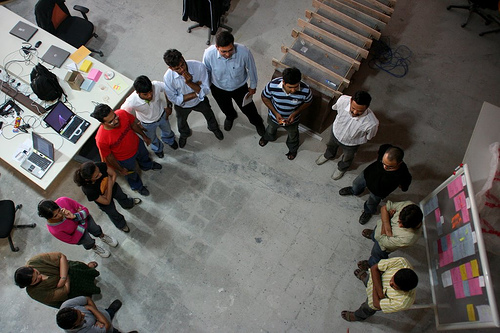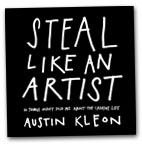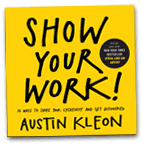I’ve never had a problem dreaming. I’ve had a problem doing. Somehow, in some ways, my dreams have gotten placed in between never, never land and the land down under. Oh, mind you, my dreams have been big. Larger than life itself, perhaps. But dreams they’ve been. I’ve managed to hold myself spellbound as I set about doing the things necessary to untangle my intricately spun web. Things like holding my head high despite several tries and remembering to take deep breaths before attempting to accomplish the next unnecessary feat. Dreaming I love and dare to do, it’s the undoing of the not doing that I have trouble with. It’s hard to remember the very necessary lesson of not being too hard on oneself and to be aware of encouraging and inspiring moments that occur in some of the most simplest moments of our lives. Moments when we’re not dreaming but fully awake. I’ve had to learn to listen with my head and now always my ears. To understand that others see ourselves differently than we think they do. That’s when I know my dreams are being realized and I’m fully awake. When I hear the words of encouragement spill forth from the mouths of more than one person throughout a given day. It’s the small moments that help me realize that my dreamy state of mind can be achieved just a little bit, slowly one day at a time. That’s when I know that I’m dreaming it and doing it.
Monthly Archives: February 2017
Dreams of Improving Maricopa Teamwork

OK, they’re all standing, but you don’t have to. This is what a Sync-Up looks like.
When I first accepted my job as an Instructional Media Developer at GCC, I was coming from a web development environment that had embraced the idea of the Daily Stand-Up. Nothing did more to help me feel like I was part of something bigger than myself than those daily, lightning-fast meetings my team held to check in with one another. In my new role, I immediately missed this sense of working together toward a shared goal. I felt alone in a silo.
If I could bring anything from the outside world into the Maricopa Community Colleges, it would be a regular Sync-Up. (Literally standing up is difficult or impossible for some people, so I don’t want to call it a Stand-Up. And for some of our teams or committees, daily is too much.) But being truly accountable to and in sync with your coworkers is something I still miss from my last job.
So what is a Sync-Up? It’s a very short meeting, no more than 15 minutes. The people doing the work are the ones who speak, though interested parties might attend as observers. Each contributing person provides 3 pieces of information when it’s their turn to speak:
- What they’ve accomplished toward shared goals since the last Sync-Up
- What they commit to accomplishing between now and the next Sync-Up
- Any obstacles they foresee that could get in the way
When not speaking it’s everyone’s job to listen closely. Specifically, to listen for points of connection to your own work, and for areas where you may be able to help. If you can help remove someone else’s obstacle you let them know, and then you’ll both collaborate after the Sync-Up – you don’t derail the meeting discussing the solution while everyone waits.
This is not a status report. Each person considers the audience – the rest of their team – and makes sure they discuss accomplishments, plans, and obstacles in a way that is meaningful to their team. The purpose is to assure that each team member’s activity is aligned and progressing the team as a whole toward successful and timely completion of their goal. In my experience, it’s empowering to Sync-Up daily when a team is working together on a well-defined project.
This is not a planning meeting where a team breaks down all the steps to complete a project. That type of planning meeting usually needs more than 15 minutes. But once you’ve laid out the tasks that need to be done to achieve a goal, regular Sync-Ups are magic for keeping your group energized and on task.
This is what regular Sync-Ups can accomplish (from Bill Hoberecht of Pinnacle Projects in his post The Daily Stand-Up Meeting – A Core Practice for Self-Organizing Teams):
- An explicit reinforcement of the commitment by each team member to accomplish a goal
- A means of dynamically adjusting the work by each team member to accomplish the goal
- A daily synchronization between team members, informing team mates of work activities, progress and issues
- A method of cross-checking progress with team mates
- An accountability mechanism that has each team member accountable to other team members for their responsibilities
- A visible demonstration of the ability of the team to self-manage their project responsibilities
The main benefit I experienced from the Sync-Up meeting style was confidence. I was confident I knew what was going on with my team and our shared goals. I was certain what I should be doing next. I knew who could and would help me out of a jam. I knew how my efforts fit into the whole. I was positive my workgroup would succeed, and I usually knew exactly when we’d achieve our goal. I knew my work was valued. I knew what my teammates needed and how I could help.
I miss feeling this way every week and hope to find ways of recapturing this sense of shared purpose within my GCC community of collaborators.
Simple, not easy
Since my hero Austin Kleon writes in bullet points, I think I will too. Here are a few thoughts about dealing with difficult situations in a positive way.
The Four Agreements by Don Miguel Ruiz
- The Four Agreements is a tiny book filled with enormous wisdom.
- Take Away Message: Don’t take anything personally.
- “Personal importance, or taking things personally, is the maximum expression of selfishness because we make the assumption that everything is about me.” Great quote from Chapter 3, page 48.
- Avoid the urge to be right and make everyone else wrong.
- Bottom Line: In a difficult situation, don’t take it personally because everyone lives in their own reality. Their anger is about them, not you. Even if they say something ugly, that’s their ugliness. Don’t make it yours too.
Unconditional Positive Regard, a concept developed by the humanistic psychologist Carl Rogers.
- Try to accept and support others without passing judgment.
- Starting from a point of unconditional positive regard will probably improve any situation.
If all else fails, lighten your mood.
- Imagine your current difficult situation is happening in a sitcom.
- Think about a silly sign. Here are a few examples:
The Sleeper has Awakened
There are really two kinds of dreams, dreams we have for ourselves (personal goals and desires) and those we have for the world around us. But dreams don’t have to be these surreal or unobtainable goals, no matter how big they are. For those who enjoy viral internet trends, you may have seen a little gem with Shia LeBeouf giving an inspiring “speech” entitled, “Just Do It.” During the motivational and comically energetic rant he utters one very important line, “Don’t let your dreams be dreams.”
[youtube https://www.youtube.com/watch?v=ZXsQAXx_ao0?rel=0]
The dreams we have for ourselves usually involve work or family. On the surface they seem much more obtainable. For example, I often dream of working as full time faculty and finally being able to move on from ten years of working part time at multiple schools. I dream of raising a child with my wife and doing the best I can to provide the same support she has provided me ever since we started dating fifteen years ago. I’d like to think those are obtainable dreams. But dreams don’t come true if you fail to act on them, they require action. My adjunct work at GCC allowed me to start working towards some of my personal dreams. I have been given the opportunity (and even encouraged) to present at meetings, develop curriculum, and even help design entire courses. Those are all very real opportunities that serve as important and needed experience. I may not have reached my dream yet, but those opportunities acted upon are progressive steps.
The dreams we have for the world around us are usually far more reaching, but that doesn’t mean they can’t be acted upon just like personal goals. My far reaching dream would be to live in a world free from prejudice and bias. When I lived in Detroit I was able to see firsthand how horrible and destructive those forces can be. I may just be an adjunct English instructor, but even from that position I can act on my dream to create that better world. By encouraging critical thinking, healthy debate, and empathy in the classroom, slowly but surely, one student at a time, the world becomes a better place through my actions. I can’t have an impact on everyone, but each student I do have a positive influence on creates a ripple, and those ripples may be felt around the world.

So don’t just sit and dream, take action, even a small step. Let the sleeper awaken and watch the world around you slowly change into to the one you imagined and hoped for. Just do it.
Utopian Dreams
A perfect world.
Where everyone is happy, everyone gets along, laughter and smiles abound. Wine and chocolate everywhere.
Alarm clock blares.
Reality check. Life is not and will not ever be perfect. We will get sick or injured, family and friends will come and go, we will run out of money, we will see many failures. And that is okay! So how do we make our lives most effective and efficient despite all of the distractions and barriers to success? How do we achieve the elusive work-life balance that everyone craves?
A long time ago in a professional development workshop, the presenter started with “fill in the blanks…I will be happy when ___________.” So everyone shouted things like degrees, houses, cars, kids, vacations, etc. But those were the wrong answers.
“I am happy now. ” That is the correct answer.
If your happiness is placed somewhere off in the far distant future, then you will never be happy, because you won’t reach it in a single day or week, and once you reach your goal, you will set another distant goal that will send you off into even more discontentedness.
So, if you have a special dream, smile and be excited for the process that will take you there. Be happy now, in your imperfect world, find the joy in little things, and learn to laugh at the obstacles, breathe, expect failure, laugh at that too, and when your dream does come true, you will have learned happiness in the process, intensifying the ecstasy.
I had a dream that this post would be a lot longer and more detailed, filled with inspiration for all. But seriously, who has time for that?!
Educational Dreams
Even though, “No Child Left Behind” legislation has formally left the American public school agenda, now there are the “College Readiness” standards, which all high school students must receive advisement. Now, every high school student is expected to go to college and secure a high paying, technological-advanced job. High school guidance counselors are doing their best to monitor between 200-400 students regarding their strengths and personality match ups with professions, which would not only be rewarding for them, but also pleasing goals.
The community colleges offers first semester college students a college preparation course, valued at three credits, to ensure that not only will the student have the time management, goal setting, and organizational skills necessitated for college courses, but also a clear direction towards declaring a personal strength compatible major. However, the question remains…where is the “dream” factor in this collegiate recipe? Are students going to reach for the stars and aim to achieve the near impossible during their lifetimes, or are they going to play it safe with a prescription academic path?
It is possible that the first couple of jobs which the students will obtain will be practical, and pay the bills. However, as one ages and seeks a deeper purpose in life, it may be an ideal time to explore careers outside of one’s comfort level and dream big. I would have never envisioned myself getting a PhD in Performance Psychology after retiring from elementary school teaching, but I am reaching for the stars, and I encourage others to do so as well.
Steal Like An Artist
I don’t know how I ended up with this idea, but I love it. Thinking about dreams for improving my job led me to one of my favorite authors, Austin Kleon. I found one of his books years ago while browsing at Urban Outfitters and I’ve been a fan ever since. He writes about work and the creative process in a fun, meaningful way.
- He writes short chapters.
- He draws simple illustrations that make sense.
- His books are fun to read and teach life-changing ideas at the same time.
- He writes in lists and bullet points.
- I love reading his stuff.
I flipped through his book, Steal Like an Artist to find inspiration for this post. So now, I’m stealing from page 108 with the following idea: Write Fan Letters. Here is a loose quote, “If you truly love somebody’s work, write them a public fan letter. Write a blog post about someone’s work that you admire and link to their site. Write something and dedicate it to your hero.”
- Who better to write about than the author of this idea?
- Austin Kleon, this post is dedicated to you.
Check out his website:
Watch a video:
Read his books:


- Whose work do you admire?
- Write them a fan letter.
Please Don’t Listen To Me!
What would you love to be able to do to improve yourself in relation to your job or to change your job? What are your dreams for improving your job, work/life balance and/or efficiency in your work?
What a question! Glad I’m not in an interview and this is my question!
My dream would be that the students all did their part. I feel very confident that if every one of my students did the homework all the time and asked question when uncertain and came to class always that very very few of them would not pass. We spend so much time and effort on talking about, researching, experimenting, dreaming up, new ways to teach and explain material and structuring curriculum and and and, but our student success rates change only slightly. When I begin a semester and I’m talking with the students the first day, it reminds me of the comic routine “Bill Cosby Himself”. It was a standup routine he did years ago. One of the stories he brings up is the kids “night” routine. He states that if the kids would just mind Mom there wouldn’t need to be any “beatings” tonight. If any of you have never seen this, you must. I’ve never laughed so hard in my life. I feel this way at the start of every semester. “If you students would just follow my advice you wouldn’t have to take me, again!”
Dream on…
Yes, we are singing again and again (you probably missed the second one because it is on another blog!).
Dream until your dreams come true…and you get to do some cool things on campus with your colleagues.
Yeah, so that one was a bit off melody! 😉 No disrespect!
I am not going to write about my dreams. Nope. I won’t be writing about lofty dreams of peace, or the elimination of poverty, or even meal times that don’t include my kids complaining about “vegetables again.” I am not going to do that. That discussion is worthwhile, but that is not what Steven is telling me to write about, and right now, I’m listening to Steven.
Dream until your dreams come true. In other words, don’t give up (thanks for that translation, Captain Obvious!). We can talk all day about how cool it would be to have virtual reality glasses in every classroom, or give every new student a brand new laptop when they enroll, or how great it would be if faculty members from all corners of campus regularly attended workshops in the CTLE, but we can’t go that big all the time. Don’t get me wrong, those are fun conversations to have, and sometimes they are useful or necessary; however, they tend to lead no where because often no first step is taken.
Really BIG first steps are scary. So are chocolate covered sardines.

Both happen. We may not know how, and we may not know why, and sometimes we may not like it, but sometimes BIG dreams do come true. And the coolest thing about it is that those big dreams come true the same way those “regular” dreams come true: take the first step. It doesn’t have to be a big step just because it is a big dream, it just has to be a step. We just have to work towards those goals one step at a time; we just have to dream on.
Getting to know you…
Sing with me (again)!
Getting to know all about…your colleagues

So a couple of weeks ago, the new group of GCC Residential faculty (lovingly referred to as the FYRE group) embarked on a tour of GCC that each of them partially lead. The “FYRE Guided Tour” is an opportunity to show off the different areas of campus where each member of FYRE works on a regular basis. Instead of parading the FYRE group around campus with me posing as the all-knowing tour guide, I created an opportunity that helps build community and connection between the group, while also learning about different programs and resources available to students.
I personally have learned quite a bit about GCC from the three FYRE Guided tours I have been on, and I know many of our new faculty have enjoyed learning about their colleagues and the campus at the same time. I mean, think about yourself and how well you really know what is happening on our campus. Even if you know of many of our programs, there is a good chance you have not seen some of the interesting, hands on learning opportunities many of our faculty create on a regular basis.
I am sure most of you know we have a fantastic nursing program, but have you actually seen the simulation lab that our students learn in? Have you seen the capabilities the mannequins have? Do you have any idea how the faculty that teach and operate these simulations plan for and pull off these lessons? Wow! Check out some our very own GCC students running through simulations.
Or did you know we have a Children Lab (or know what one is for that matter)? In our Child and Family Studies department, there is an active daycare that is part of the learning environment for our students. Through a two-way mirror and an intercom system, GCC students are able to observe the behavior of children in the daycare and analyze the way the childcare professionals interact, teach and play with the kids, all while the professor connects theory to practice. Awesome!
There are many other programs and resources on campus besides these two, and as I mentioned already, many of us know of them, but unfortunately, we don’t really know them.
We haven’t really seen the materials, the labs, and the behind-the-scenes rooms (full of costumes and rocks and chemicals and plastinated body parts and props and fire engines and grand pianos and toys and boom mics and pinned insects and Corvettes) all over campus.
We know the people who work in these fields, who have dedicated countless hours planning and prepping, and we love catching up with them in the common areas of campus, but we often haven’t seen them in their domain, which means we don’t really know what our colleagues do here at GCC.
Is this a missed opportunity? Might this be the clue we’ve been searching for in our quest to tear down (or at least connect) the silos? It could be, or it might just be me wishing we could all see more of the inner workings of different departments and different disciplines. Anyone game to host an “Open Department” someday?!







